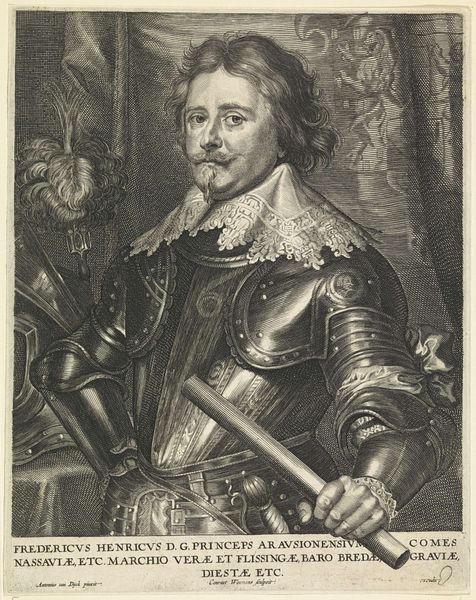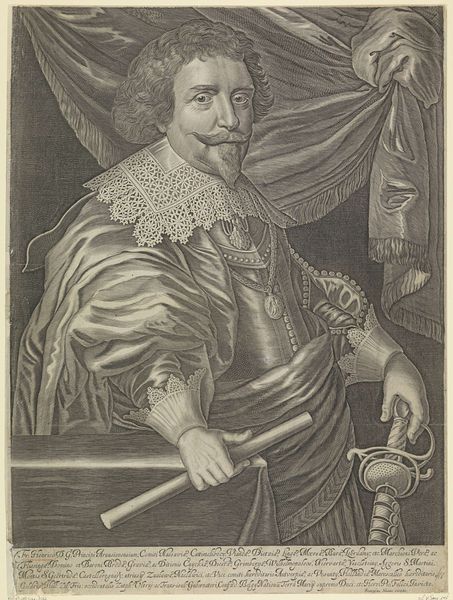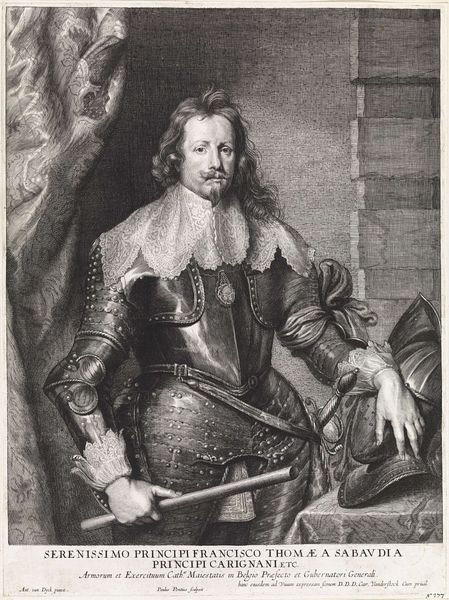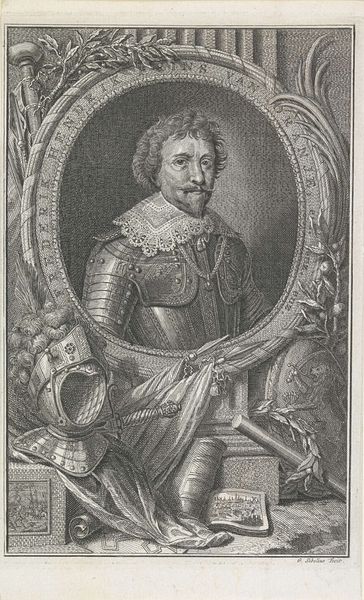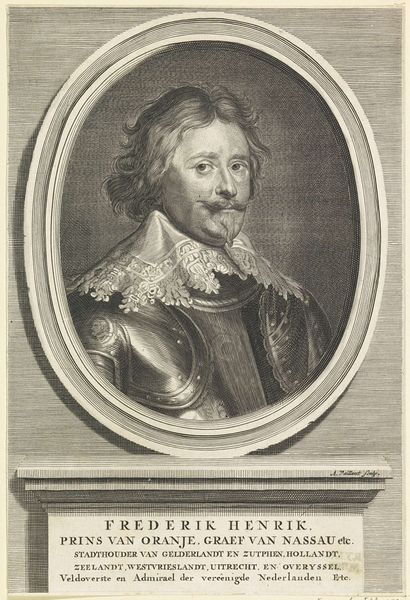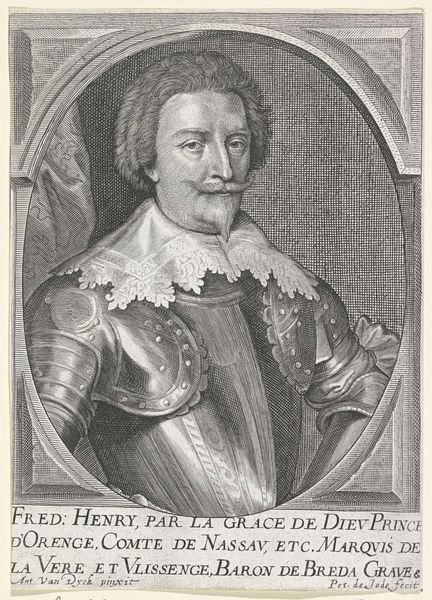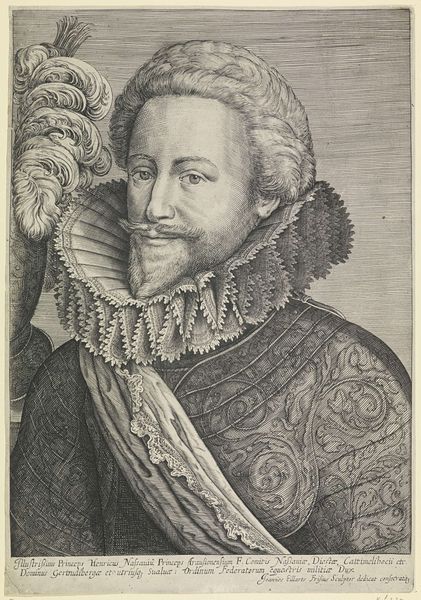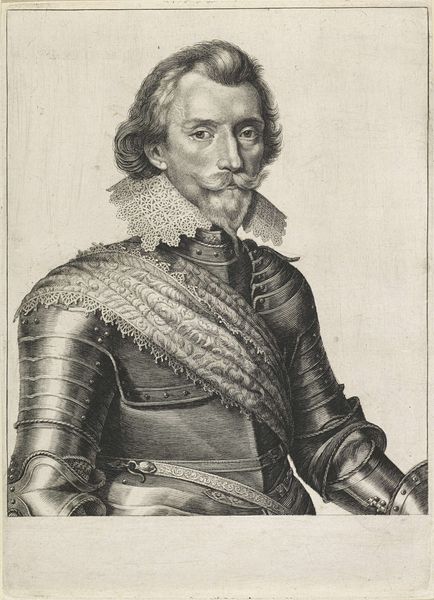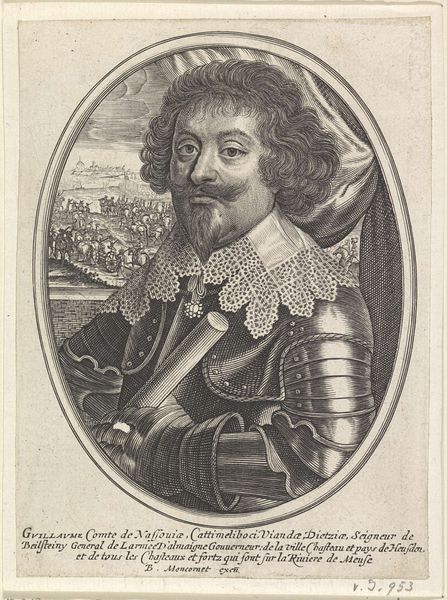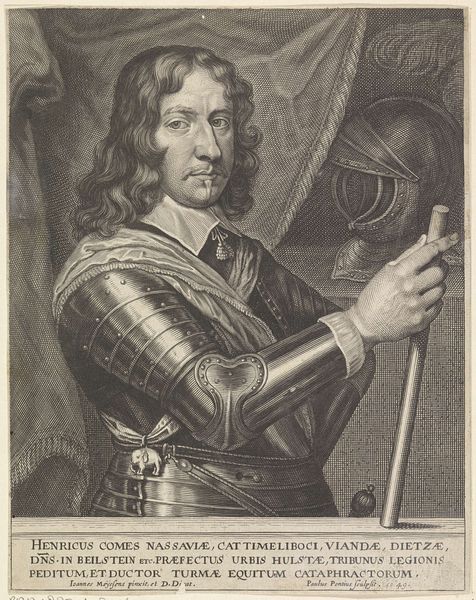
print, engraving
#
portrait
#
baroque
#
dutch-golden-age
# print
#
old engraving style
#
figuration
#
portrait reference
#
old-timey
#
line
#
history-painting
#
academic-art
#
engraving
Dimensions: height 482 mm, width 342 mm
Copyright: Rijks Museum: Open Domain
Curator: Here we have an engraving dating to about 1650. It’s entitled "Portret van Frederik Hendrik, prins van Oranje," or Portrait of Frederick Henry, Prince of Orange, attributed to Paulus Pontius. Editor: It has this severe formality to it, right? That unflinching gaze. But also something melancholic about the subject, though he's rendered in all this glistening armour. Curator: That's a fantastic observation. These printed portraits served very specific roles in projecting power and authority during the Dutch Golden Age. Frederick Henry was, after all, a hugely important figure, stadholder for a long period, so images of him were carefully crafted and disseminated. The choice of an engraving itself is significant. It's a reproducible medium, accessible, a propaganda tool. Editor: Absolutely, and the engraving emphasizes certain qualities through its technique. I'm thinking of the textures. Look at the gleam on the armor. This isn't just flat representation, there’s labor in capturing the light hitting the metal. It gives this illusion of wealth through the printing. Curator: Precisely, it shows us how the elite were represented but also considers who consumed these representations, since printmaking had become a sophisticated business by this time. Prints like these solidified the image of the Dutch leadership in the public consciousness. They functioned as status symbols for buyers and talking pieces for viewers. Editor: The detail, even in the background drape with the lion rampant... The hand, though, looks almost hesitant as it grasps the baton. The materiality tells its own story of both power and vulnerability. Curator: It humanizes a leader even as it tries to raise him to an idealized stature, doesn't it? That is to say, the history of printmaking provides the historical context of art’s dissemination to and its interpretation by a wide range of people and places. Editor: It also emphasizes that labor can represent but also mask or obfuscate. Still, the contrast between the Prince’s adornment and the delicate, handmade lace, underscores just how precious each of these materials really is. Food for thought as we continue our tour. Curator: Indeed, understanding the broader impact of images and art creation on societal attitudes is paramount when interpreting art history.
Comments
No comments
Be the first to comment and join the conversation on the ultimate creative platform.
